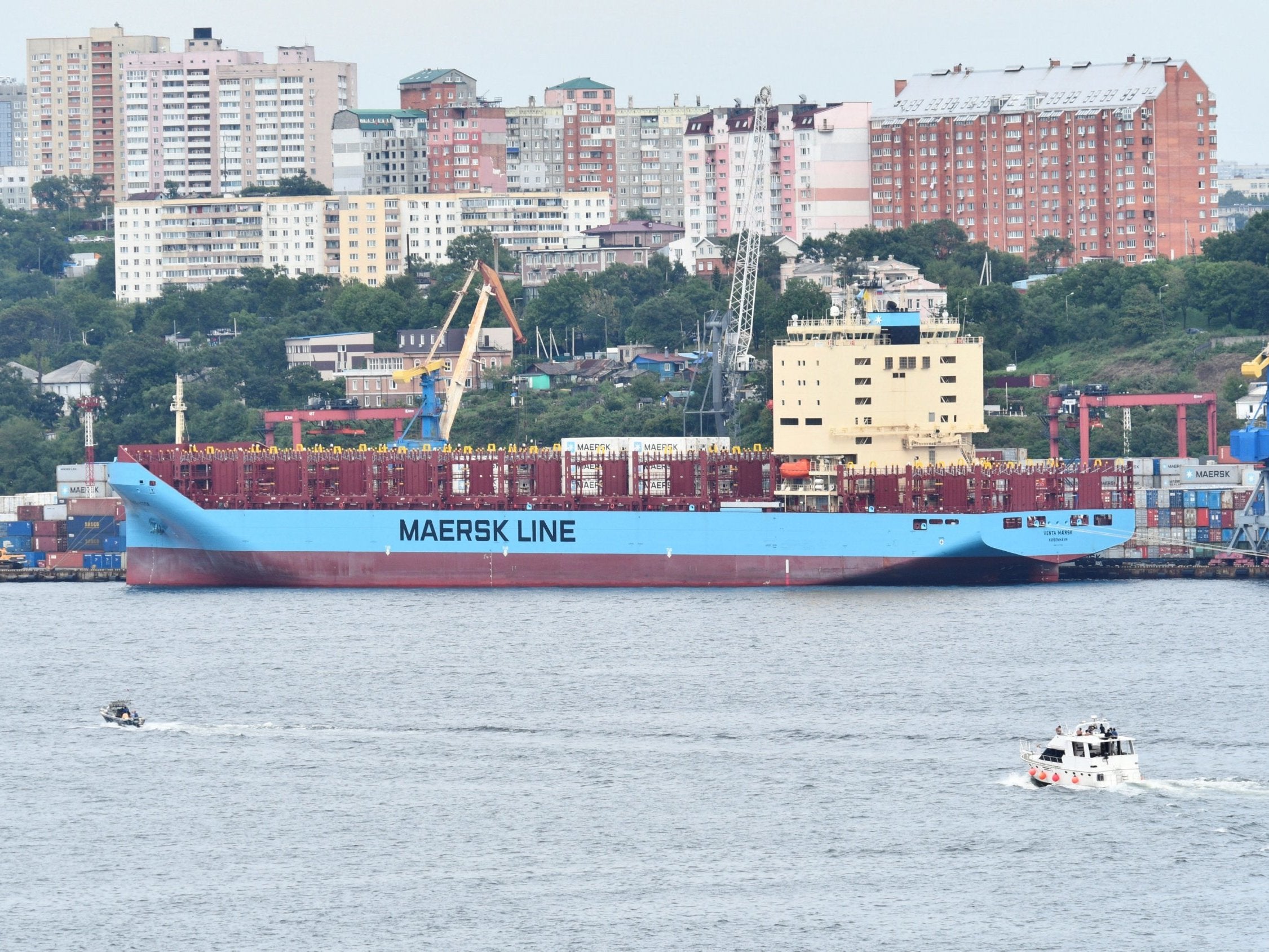Container ship crosses Arctic route for first time in history due to melting sea ice
Ice-class 42,000 ton vessel carries Russian fish and South Korean electronics to Europe

Your support helps us to tell the story
From reproductive rights to climate change to Big Tech, The Independent is on the ground when the story is developing. Whether it's investigating the financials of Elon Musk's pro-Trump PAC or producing our latest documentary, 'The A Word', which shines a light on the American women fighting for reproductive rights, we know how important it is to parse out the facts from the messaging.
At such a critical moment in US history, we need reporters on the ground. Your donation allows us to keep sending journalists to speak to both sides of the story.
The Independent is trusted by Americans across the entire political spectrum. And unlike many other quality news outlets, we choose not to lock Americans out of our reporting and analysis with paywalls. We believe quality journalism should be available to everyone, paid for by those who can afford it.
Your support makes all the difference.A commercial container ship has for the first time successfully navigated the Northern Sea Route of the Arctic Ocean, a route made possible by melting sea ice caused by global warming.
Maersk Line, the world’s biggest container shipping company, told The Independent its ship, Venta Maersk, was expected to reach its final destination of St Petersburg next week.
The new ice-class 42,000 ton vessel, carrying Russian fish and South Korea electronics, left Vladivostok, in the far east of Russia, on the 23 August.
With help from Russia's most powerful nuclear icebreaker, it followed the Northern Sea Route up through the Bering Strait between Russia and Alaska, before travelling along Russia’s north coast and into the Norwegian Sea.
The route has seen growing traffic during summer months already, with cargos of oil and gas regularly making the journey.
Arctic sea ice hit a record low for January this year, and an “extreme event” was declared in March as the Bering Sea’s ice levels reached the lowest level in recorded history as temperatures soared to 30C above average.
Data released by the National Snow and Ice Data Centre in Colorado showed this winter’s sea ice cover was less than a third of what it was just five years ago.
The Northern Sea Route can cut journey times between Asia and Europe by up to two weeks by allowing ships to avoid travelling through the Suez Canal or past the Cape of Good Hope in South Africa.
The Arctic Ocean route does, however, remain more costly as icebreakers are still required to accompany ships.
In an email to The Independent, Maersk confirmed the success of the “one-off trial passage”, with icebreaker ships providing assistance “as required”.
“The trial passage will enable us to explore the operational feasibility of container shipping through the Northern Sea Route and to collect data,” a spokesperson said.
“Currently, we do not see the Northern Sea Route as a commercial alternative to our existing network.”
Sune Scheller, project leader of Greenpeace Nordic, told The Independent any regular shipping route in the Arctic Ocean ultimately risked an "environmental catastrophe".
"The most immediate threat comes from some of the problems with the fuel," he said.
“Maersk hasn’t spoken about which kind of fuel this [ship] is using, but in general container ships are using heavy fuel oil, which is basically what’s left in the barrel.”
Mr Scheller said the "dirty fuel" had "consequences" for the environment, including adding to particulate matter in the atmosphere.
Also known as black carbon, particulate matter rests on white surfaces like ice and snow and absorbs heat instead of reflecting it, which contributes to climate change.
According to The Economist, “just 15 of the biggest ships emit more of the noxious oxides of nitrogen and sulphur than all the world’s cars put together”.
"It’s also of a concern in case of an accident," Mr Scheller continued. "It is more toxic and it is more difficult to get out of the environment again, especially an Arctic environment where the water is cold."
A combination of the use of heavy fuel oil, the shallow water of the Arctic Ocean, and the ice makes the Northern Sea Route one of "increased risk" of a catastrophe, he added.
But as global warming increases ice loss, Mr Scheller said banning commercial shipping in the area was unlikely to be a realistic possibility.
“What’s important now is that you make sure that when this becomes available, you have the necessary regulation in place in the area," he said.
"So that means you have vessels that are capable of charting this area, But it’s also about putting bans on the most dirty types of fuels that exist."
Global estimates suggest ships are responsible for 15 per cent of nitrogen oxides and 8 per cent of sulphur gas worldwide. These gases have been linked with a range of health problems including asthma, heart disease and cancer.
Join our commenting forum
Join thought-provoking conversations, follow other Independent readers and see their replies
Comments